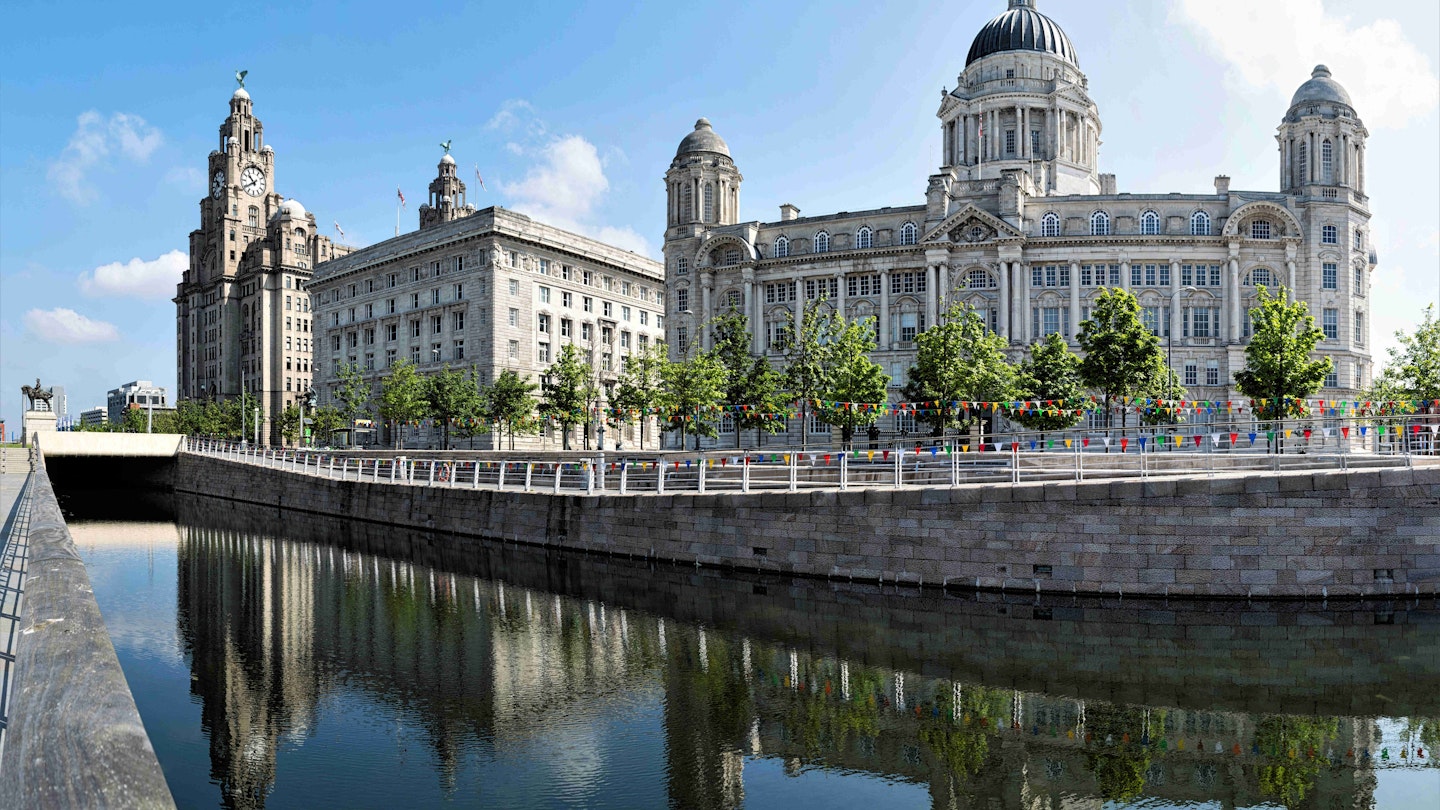Best known as the home town of the Beatles, the English city of Liverpool also boasts architecturally striking buildings that narrate the stories of its past. From Queen Anne style to Brutalism, Neoclassical to industrial Victorian, the historical architecture of Liverpool earned it Unesco World Heritage status in 2004. This architectural diversity draws hundreds of thousands of visitors each year.
Bluecoat Chambers
These days Bluecoat Chambers is an arts centre but three centuries ago when it was built it was a school © Mark Sykes / Getty Images
Believed to be the oldest building in the city centre (built 1716),
The Bluecoat is a former school turned arts centre. It is a striking H-shaped building, constructed in Queen Anne style, featuring grand columns and round-arched windows. A modern extension allows for performances and exhibitions to take place.
Liverpool Town Hall
The lavish interior of Liverpool Town Hall © Mark Sykes / Getty Images
The Grade I listed
Liverpool Town Hall is a spectacular example of Georgian architecture. Opened in 1754, it showcases Georgian decorative style and reflects Liverpool’s booming 18th-century economy. It features embellished stone frontage, classical design principles, and is still in use by the council for various events and public tours.
St George’s Hall
The huge St George’s Hall looks as good at night as it does during the day © P A Thompson / Getty Images
Offering an impressive welcome for those arriving at Lime Street train station, St George’s Hall is another Neoclassical Grade I listed building. Opened in 1854, it serves a variety of purposes including concerts and cultural events, with grandeur reflected in its architecture.
Albert Dock
From its innovative design to its contemporary uses, the Albert Dock has played an important part in Liverpool life © SAKhanPhotography / Getty Images
Opened in 1846, the Albert Dock was once at the center of world trade. It features fireproof warehouses and was pivotal for safe trading. After a period of disrepair post-World War II, it has been renovated and now houses major attractions such as museums, restaurants, and galleries.
The Three Graces
The Royal Liver Building, one of the Three Graces, comes crowned with two Liver Birds, symbols of the city © Chris Hepburn / Robert Harding / Getty Images
Collectively known as the Three Graces, the Royal Liver Building, the Cunard Building, and the Port of Liverpool Building serve as iconic emblems of the city’s waterfront. Each building showcases different architectural styles, solidifying their status as must-see landmarks.
Liverpool Anglican Cathedral
The Anglican cathedral has a soaring, atmospheric, record-breaking interior © Andrew Turner / Getty Images
Known as the Cathedral Church of Christ, Liverpool Anglican Cathedral is an impressive Gothic Revival masterpiece, completed after extensive construction between 1904 and 1978. As the longest cathedral in the world, it boasts the highest and widest Gothic arches.
The Metropolitan Cathedral of Christ the King
The bold, modern design of Liverpool’s Catholic cathedral © ilbusca / Getty Images
In contrast to the Anglican Cathedral, the Metropolitan Cathedral of Christ the King features a modern design from the 1960s with unique conical architecture. The cathedral’s interior shares a rich history, blending traditional and modern influences.
Liverpool ONE
To revitalize the heart of the city after a decline in manufacturing and trade, Liverpool ONE was developed in the late 1990s and 2000s. This complex connects various parts of the city center, showcasing design elements that honor Liverpool’s rich heritage while revitalizing its cultural scene.
Walking around Liverpool ONE, you’ll experience a vibrant mix of architecture, from historical inspirations to modern aesthetics, making it a fitting conclusion to your exploration of Liverpool’s architectural grandeur.
Post Views: 88















